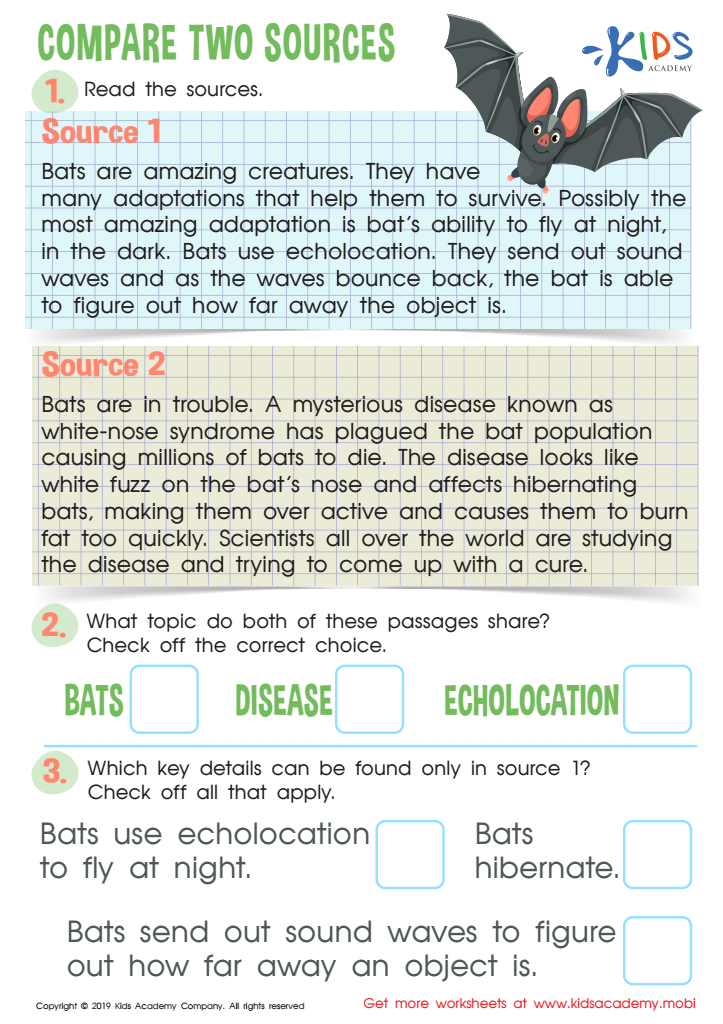Analyzing information sources Worksheets for Kids
1 filtered results
-
From - To


Compare Two Sources Worksheet
Question/Answer
What are some effective activities to train students’ Analyzing information sources skill when teaching them about Reading Non-Fiction?
To train students in analyzing information sources while reading non-fiction, incorporate activities like source comparison, evaluating source credibility (author expertise, publication date, biases), identifying primary vs secondary sources, and analyzing the purpose and audience of a text. Additionally, have students practice distinguishing between facts, opinions, and inferences within the text. These exercises promote critical thinking and discernment in information processing.
How does the mastery of the Analyzing information sources skill affect a student's performance at an early age?
Mastering the Analyzing Information Sources skill at an early age significantly enhances a student's performance by improving critical thinking, enabling them to distinguish between reliable and unreliable information. This foundational ability supports effective research, fosters informed decision-making, and bolsters academic success across various subjects, thereby laying a strong foundation for lifelong learning and adaptability in a rapidly changing information landscape.
How to train the Analyzing information sources skill in Grade 3 students learning about Reading Non-Fiction?
To train Grade 3 students in analyzing information sources while reading non-fiction, start by teaching them to identify the author and source of the information. Guide them in asking critical questions about the source's credibility, purpose, and bias. Encourage comparing information across different sources, recognizing facts vs. opinions, and practicing summarizing key points from the texts they read.
 Assign to the classroom
Assign to the classroom












